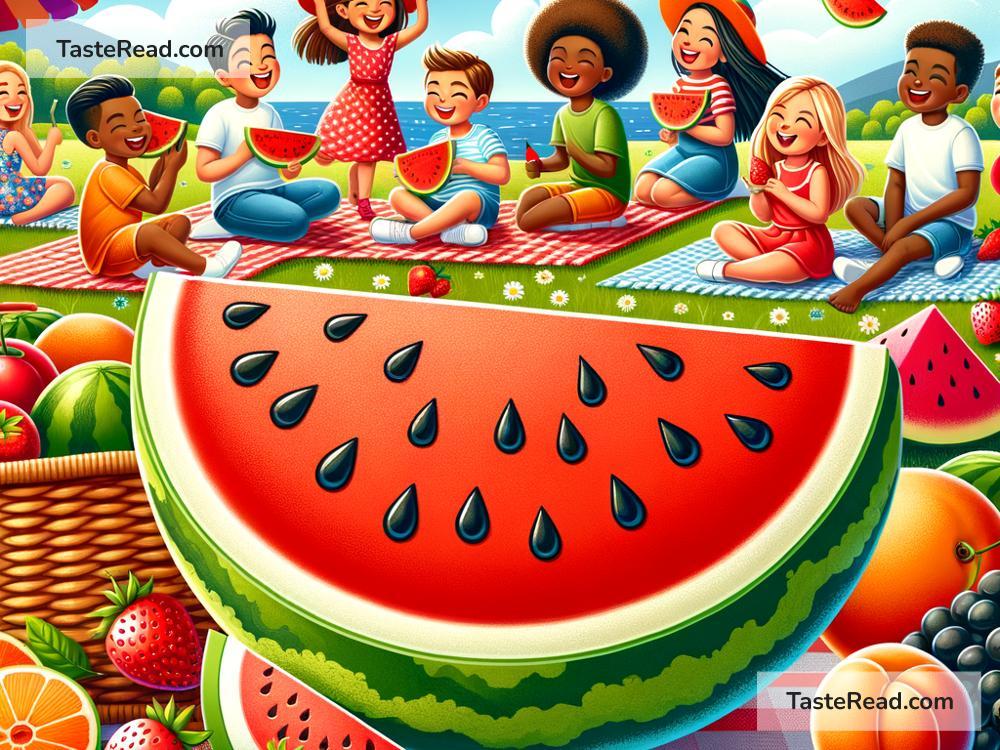How Watermelons Became Symbols of Summer Joy
When you think of summer, what comes to mind? Sunny days, picnics, laughter, and a refreshing slice of watermelon, right? There’s something magical about watermelons that instantly makes us smile during the warmest months of the year. But how did this juicy fruit become such an iconic part of summertime? Let’s explore its story and why it represents the joy of summer.
A History of Watermelons
Watermelons have a long and interesting history. They are believed to have first grown in Africa around 5,000 years ago. Ancient people valued watermelons not just for their sweet taste but also for their high water content. During hot, dry seasons, watermelons were like natural water bottles that helped people stay hydrated.
Over time, watermelons made their way to other parts of the world. Travelers and traders brought them to places like Egypt, India, and Europe. People everywhere quickly realized how wonderful this fruit was. By the 1600s, watermelons arrived in America, where farmers began growing them in abundance. Today, millions of watermelons are enjoyed every year all over the world.
The Perfect Summer Fruit
Watermelons are more than just delicious—they’re a perfect match for summer. First of all, they grow best in warm weather, which is why we usually find them during summer. Farmers harvest ripe watermelons between June and August when the sun is shining bright, and people are embracing outdoor activities.
But there’s more to watermelons than their summer availability. They’re also refreshing. On hot days, a bite of watermelon feels like a cool breeze in your mouth. With about 90% of the fruit made of water, it’s the ultimate thirst-quencher. No wonder people reach for watermelons during barbecues, pool parties, and beach days!
On top of that, watermelons are easy to share. You can slice them into big wedges for your friends and family or cut them into small cubes for a party snack. Everyone can enjoy a piece, making watermelon a fruit that brings people together.
Sweet Memories of Summer
You might not realize it, but watermelons have probably helped shape many of your favorite summer memories. Think back to the pops of pink and the crunch of black seeds during your childhood. (Unless it’s seedless, of course!) Chances are, you’ve bitten into a watermelon while sitting outside under the sun, laughing with loved ones.
For some people, watermelons are connected to summer traditions. Families pass down recipes for watermelon-based salads, sorbets, and drinks. Communities host watermelon festivals where there are games like watermelon-eating contests and seed-spitting competitions. These fun activities remind us that summer is not just about the heat but the happiness we find in simple moments together.
Even in pop culture, we see watermelons celebrated as symbols of summer joy. Pictures of watermelons decorate everything from picnic blankets to pool floats. Songs and stories feature the fruit as a sign of carefree summer days. Because of its bright colors and playful appearance, the watermelon has become a visual cue for all things fun and sunny.
Healthy and Happy
Besides its flavor and fun, watermelons also have some surprising health benefits. They contain vitamins like A and C, which are good for your skin and immune system. They’re packed with antioxidants, helping your body fight off stress and damage. Some studies even suggest that watermelons improve heart health and help muscles recover after exercise.
Eating watermelon isn’t just enjoyable—it’s good for you, too! And because they’re naturally sweet, they make a healthier dessert option compared to cakes or sugary snacks. Parents often offer watermelon to kids during the summer to keep them happy and hydrated, while staying away from less nutritious treats.
The vibrant colors of watermelon—red or pink flesh, green rind, and black seeds—are also cheerful to look at. Just seeing a slice of watermelon can lift your spirits and remind you of sunny days.
A Global Love for Watermelon
While watermelon is especially tied to summertime in places with warm weather, it’s loved all over the world. In Asia, people enjoy watermelon flavored drinks and candies. In Mexico, watermelon is paired with lime and chili powder for a tangy treat. In the Middle East, watermelon is often eaten with salty feta cheese as a surprising but tasty combination. Each culture has found its own way to make watermelons part of their special moments.
No matter where you are or how you eat it, watermelon is a fruit that connects people. It’s a little symbol of joy that everyone understands.
Conclusion
Watermelons have become more than just a snack—they’re an experience. They remind us of the simple pleasures in life: sharing food, staying cool, and enjoying time with loved ones. Whether you’re packing a picnic, spending the day by the pool, or hosting a summer cookout, watermelon has a way of adding flavor and fun to the moment.
So, the next time you bite into a slice of watermelon, take a second to appreciate its story. From ancient African fields to your summer plate, this fruit has been bringing people happiness for thousands of years. It’s no wonder watermelons have become symbols of summer joy—they represent everything we love about the season!


